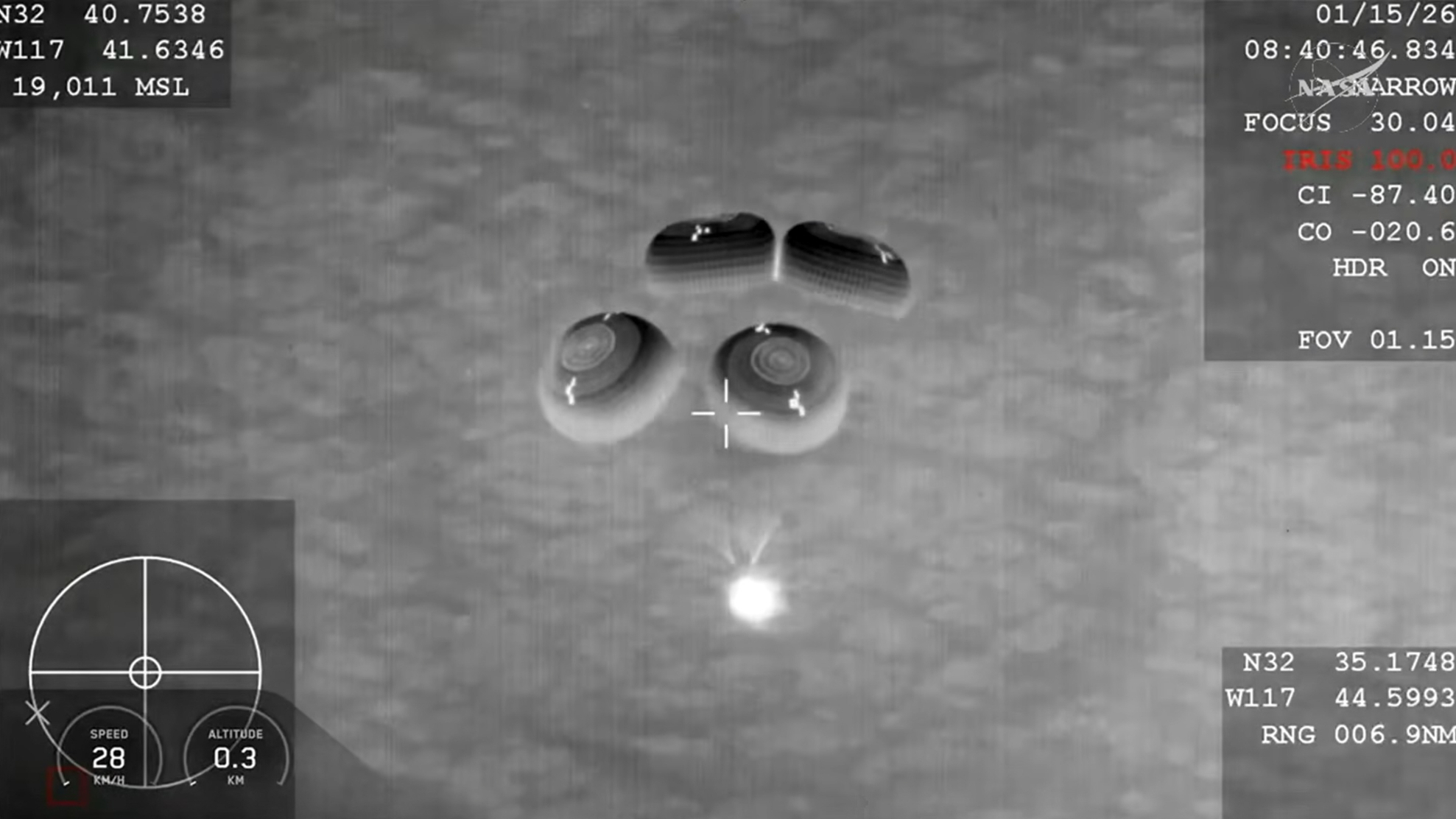Role Reversal: Planet Controls a Star
In a reversal of roles, a planet has gravitationally bullied its star to rotate in step with the planet's orbit. The star's behavior is similar to that of our Moon, which turns just fast enough to keep one face always pointing at the Earth.
It is unusual, however, to see the larger body - in this case a star 1.4 times the mass of the Sun - being tidally locked by a smaller body.
"This is truly a stellar story of 'tail wags dog,'" said Jaymie Matthews of the University of British Columbia at the annual meeting of the Canadian Astronomical Society in Montreal last week.
Matthews is the principal investigator for the Canadian Space Agency's MOST (Microvariability & Oscillations of STars) space telescope, which recently observed slight variations in the light from tau Bootis ("tau Boo" for short) - a star 50 light years away with a planet in a tight, 3.3-day orbit around it.
"The interactions between the star and the giant planet in the tau Bootis system are unlike anything astronomers have seen before," Matthews said. "And they would be undetectable by any instrument on Earth or in space other than MOST."
Although it is suspected that many of the close-in exoplanets - so-called "hot Jupiters" - are tidally locked to their stars, this is the first detection of a star tidally locked to its planet. Knowing that the star's rotation is synchronized should reveal much more about this strange system.
Canada's humble satellite
Breaking space news, the latest updates on rocket launches, skywatching events and more!
Launched in June 2003, MOST is Canada's only space telescope. Weighing a mere 132 pounds, it is relatively small as these things go.
"It basically is a suitcase in space," Matthews said. "It may be the only satellite that weighs less than its principal investigator."
MOST was designed to see changes of a part per million in the brightness of stars. According to Matthews, this is equivalent to standing outside the Empire State Building with all its lights on and noticing when someone pulls down one window shade by half an inch.
The MOST team focused on tau Boo in hopes of spotting the subtle reflection from its planet - called tau Bootis b. Instead, they saw evidence for rotation of the star's outer surface at a rate of once every 3.3 days. The upshot was that the planet only sees one side of its star.
"We suspected this for some time because tau Boo appeared to be rotating anomalously fast for a star of its type," said Andrew Cameron of the University of St. Andrews in Scotland.
Six years ago, Cameron and his colleagues had an unconfirmed detection of reflected light from tau Boo b. He said the recent results from MOST imply that the planet's orbit is inclined at about 40 degrees with respect to our view.
"This ties down the planet's mass to between 7 and 8 times the mass of Jupiter," Cameron told Space.com.
In 1997, a lower limit of 4.4 Jupiter masses was given to tau Bootis b from the radial velocity method, which measures the Doppler shift in a star as a planet whips around it. If one knows the orbital inclination - as is presumably the case here - one can make a more precise mass estimate.
Moreover, with follow-up measurements of tau Boo, astronomers should be able to extract a signal from starlight bouncing off the planet.
"It's going to make searches for reflected light easier because we know what region of [the star's spectrum] to look in," Cameron said.
The light that reflects off a planet can tell astronomers the chemical composition of its atmosphere and whether or not this distant world has clouds.
Getting in step
According to Cameron, the synchronization of the tau Boo system probably took a billion years - the star likely began spinning faster by stealing angular momentum from its companion.
"The planet in response would have moved in a little," Cameron said.
Because of tidal friction, almost all systems eventually become synchronized. "Given long enough, the Earth will face the Moon," noted Cameron. The time for synchronization is faster the closer and heavier the synchronizer is in comparison to the synchronizee. Most stars do not live long enough to become locked to their planets.
In the case of tau Boo, the planet weighs about 0.5% that of its star - compared to Jupiter, which is 0.1% the mass of our Sun. But more importantly, tau Boo b is 100 times closer in than Jupiter is.
- Cheapest Space Telescope: Making the MOST of $10 million
- First Direct Light Ever Seen from Planet Beyond Our Solar System
- Moon Mechanics: What Really Makes Our World Go 'Round

Michael Schirber is a freelance writer based in Lyons, France who began writing for Space.com and Live Science in 2004 . He's covered a wide range of topics for Space.com and Live Science, from the origin of life to the physics of NASCAR driving. He also authored a long series of articles about environmental technology. Michael earned a Ph.D. in astrophysics from Ohio State University while studying quasars and the ultraviolet background. Over the years, Michael has also written for Science, Physics World, and New Scientist, most recently as a corresponding editor for Physics.
